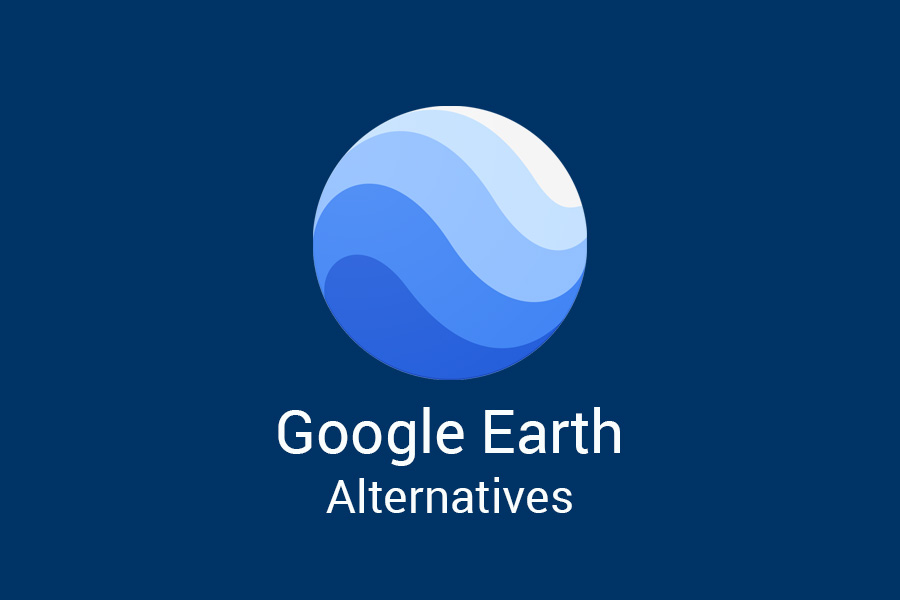Google Earth has been a go-to tool for exploring our planet from the comfort of our homes. It offers satellite imagery, aerial photography, and 3D representations of Earth’s terrain. However, there may be various reasons to search for alternatives, such as data accuracy, privacy concerns, or additional features. In this article, we will dive into nine incredible Google Earth alternatives, comparing their features, pros, and cons, and helping you choose the perfect tool for your needs.

1. NASA World Wind
1.1 Overview and features
NASA World Wind is an open-source virtual globe application developed by the National Aeronautics and Space Administration (NASA). It offers high-resolution satellite imagery, 3D terrain models, and an extensive catalog of geographic data layers. With its powerful visualization capabilities, World Wind allows users to explore Earth and other celestial bodies such as Mars and the Moon.
1.2 How to use NASA World Wind
To use NASA World Wind, download the application from the official website and install it on your computer. Once installed, launch the program and navigate the globe using the mouse and keyboard controls. You can also access different data layers and tools through the menu options.
1.3 Pros and cons
Pros:
- High-resolution satellite imagery
- 3D terrain models
- Extensive data layers
- Open-source and free to use
Cons:
- Requires installation
- Steeper learning curve compared to Google Earth
2. ArcGIS Earth
2.1 Overview and features
ArcGIS Earth is a free, interactive 3D globe application created by Esri, a leading provider of geographic information system (GIS) software. It offers high-quality satellite imagery, 3D terrain data, and powerful GIS tools. ArcGIS Earth allows users to explore the world, create and share maps, and analyze spatial data.
2.2 How to use ArcGIS Earth
To start using ArcGIS Earth, download the application from the Esri website and install it on your computer. Once installed, open the program and begin exploring the globe. You can access various tools and data layers, import and export data, and create maps using the menu options.
2.3 Pros and cons
Pros:
- High-quality satellite imagery
- Powerful GIS tools
- Support for various data formats
- Free to use
Cons:
- Requires installation
- Can be resource-intensive for older computers
3. Marble
3.1 Overview and features
Marble is an open-source virtual globe and world atlas application developed by the KDE project. It offers a simple, user-friendly interface for exploring the Earth, Moon, and other celestial bodies. Marble provides various map themes, including satellite imagery, street maps, and topographic maps. It also supports GPS tracking and route planning.
3.2 How to use Marble
To use Marble, download the application from the KDE website and install it on your computer. Launch the program, and you can immediately start navigating the globe using the mouse and keyboard controls. Access additional map themes and tools through the menu options.
3.3 Pros and cons
Pros:
- Simple and user-friendly interface
- Multiple map themes
- GPS tracking and route planning
- Open-source and free to use
Cons:
- Limited data layers compared to other alternatives
- Requires installation
4. QGIS
4.1 Overview and features
QGIS is an open-source GIS application that offers powerful mapping and spatial data analysis tools. While not a direct alternative to Google Earth, it provides a much more detailed and advanced mapping experience.QGIS offers many powerful tools for analysis, including spatial data types such as vector, raster, and point cloud; well-known GIS tools such as vector and raster editors.
4.2 How to use QGIS
To start using QGIS, download the application from the official website and install it on your computer. Once installed, launch the program and create a new project. You can add various data layers, such as satellite imagery, shapefiles, and raster data, by accessing the menu options. QGIS also offers a wide range of GIS tools for data analysis and visualization.
4.3 Pros and cons
Pros:
- Powerful GIS tools and features
- Support for various data formats
- Extensive plugin library
- Open-source and free to use
Cons:
- Steeper learning curve for beginners
- Requires installation
5. Cesium
5.1 Overview and features
Cesium is an open-source JavaScript library for creating 3D globes and 2D maps in a web browser. It offers high-resolution satellite imagery, 3D terrain data, and support for various data formats. Cesium is ideal for developers and programmers who want to create custom web-based mapping applications.
5.2 How to use Cesium
To use Cesium, visit the official website and access the CesiumJS library. You can then start building your custom mapping application using HTML, CSS, and JavaScript. Cesium provides extensive documentation, tutorials, and examples to help you get started.
5.3 Pros and cons
Pros:
- High-resolution satellite imagery
- 3D terrain data
- Ideal for developers and programmers
- Open-source and free to use
Cons:
- Requires programming knowledge
- Not suitable for casual users
6. Bhuvan
6.1 Overview and features
Bhuvan is a web-based geoportal developed by the Indian Space Research Organisation (ISRO). It provides high-resolution satellite imagery, thematic maps, and GIS data primarily focused on India. Bhuvan offers various tools for data visualization, analysis, and sharing, making it a valuable resource for researchers, educators, and decision-makers.
6.2 How to use Bhuvan
To use Bhuvan, visit the official website and start exploring the interactive map. You can navigate the globe using the mouse and keyboard controls, and access various data layers and tools through the menu options. Registration is required to access some advanced features and data sets.
6.3 Pros and cons
Pros:
- High-resolution satellite imagery
- Focus on Indian geography and data
- Web-based and easy to use
- Free to use
Cons:
- Limited global coverage compared to other alternatives
- Requires registration for advanced features
7. OpenStreetMap
7.1 Overview and features
OpenStreetMap (OSM) is a collaborative project to create a free, editable map of the world. It offers detailed street maps, points of interest, and various map styles. While OSM does not provide satellite imagery or 3D terrain data like Google Earth, it is an excellent resource for street-level mapping and navigation.
7.2 How to use OpenStreetMap
To use OpenStreetMap, visit the official website and start exploring the interactive map. You can navigate the globe using the mouse and keyboard controls, and search for specific locations or points of interest using the search bar. As a collaborative project, you can also contribute to OSM by adding or editing map data.
7.3 Pros and cons
Pros:
- Detailed street maps and points of interest
- Multiple map styles
- Collaborative and community-driven
- Free to use
Cons:
- No satellite imagery or 3D terrain data
- Limited functionality compared to Google Earth
8. Mapbox
8.1 Overview and features
Mapbox is a platform that offers customizable maps, geocoding, and navigation services for web and mobile applications. It provides high-resolution satellite imagery, vector maps, and various map styles. Mapbox is ideal for developers who want to integrate maps and location services into their projects.
8.2 How to use Mapbox
To start using Mapbox, visit the official website and sign up for an account. Once registered, you can access the Mapbox Studio, where you can create custom maps and styles, manage data, and generate access tokens for API usage. Mapbox offers extensive documentation, tutorials, and examples to help developers get started with integrating maps into their applications.
8.3 Pros and cons
Pros:
- High-resolution satellite imagery
- Customizable map styles
- Robust APIs for developers
- Freemium pricing model
Cons:
- Requires programming knowledge
- Not suitable for casual users
- Limited free tier
9. HERE WeGo
9.1 Overview and features
HERE WeGo is a web and mobile mapping service developed by HERE Technologies. It offers detailed street maps, satellite imagery, and various map styles. HERE WeGo provides features such as turn-by-turn navigation, public transit information, and traffic data, making it an excellent resource for travel and daily commuting.
9.2 How to use HERE WeGo
To use HERE WeGo, visit the official website or download the mobile app for iOS or Android devices. Start exploring the interactive map by navigating with the mouse or touch controls. You can search for specific locations, get directions, and access various map styles and layers through the menu options.
9.3 Pros and cons
Pros:
- Detailed street maps and satellite imagery
- Turn-by-turn navigation and public transit information
- Web-based and mobile app support
- Free to use
Cons:
- Limited functionality compared to some Google Earth alternatives
- No 3D terrain data
Conclusion
Choosing the right Google Earth alternative depends on your specific needs and preferences. Each of the nine alternatives discussed in this article offers unique features, advantages, and limitations. For casual users, Marble and HERE WeGo provide user-friendly interfaces and essential mapping features. For more advanced users, QGIS and ArcGIS Earth offer powerful GIS tools and extensive data layers. Developers and programmers may prefer Cesium and Mapbox for their customizability and integration capabilities.
Before settling on an alternative, consider factors such as ease of use, data availability, and compatibility with your devices. With a bit of exploration, you’ll find the perfect tool to satisfy your virtual globe and mapping needs.
Frequently Asked Questions (FAQs)
- Which alternative is the best for educational purposes? NASA World Wind and ArcGIS Earth are excellent choices for educational purposes due to their extensive data layers and visualization capabilities.
- Which alternative is the most user-friendly? Marble and HERE WeGo offer user-friendly interfaces that cater to casual users.
- Are there any free alternatives to Google Earth? Yes, several alternatives are free to use, including NASA World Wind, Marble, QGIS, Cesium, Bhuvan, OpenStreetMap, and HERE WeGo.
- Can I use these alternatives on mobile devices? Some alternatives, such as HERE WeGo, offer mobile apps for iOS and Android devices.
- Which alternative offers the best 3D rendering? NASA World Wind and Cesium provide impressive 3D terrain rendering capabilities.
- Are there any privacy concerns when using these alternatives? As with any online service, it is important to review the privacy policies and data collection practices of each alternative before using them. Open-source alternatives like QGIS, NASA World Wind, and Marble may offer better privacy due to their transparent development processes and lack of data monetization.
- Can I use these alternatives for professional GIS work? Yes, alternatives like QGIS and ArcGIS Earth offer powerful GIS tools and extensive data layers suitable for professional GIS work.
- How often are the maps and satellite images updated in these alternatives? The frequency of map and satellite image updates varies between alternatives and depends on the data providers they use. For the most up-to-date information, check each alternative’s official website or documentation.
- Which alternative is best suited for developers and programmers? Cesium and Mapbox are ideal choices for developers and programmers, as they offer powerful APIs, customization options, and integration capabilities for web and mobile applications.
